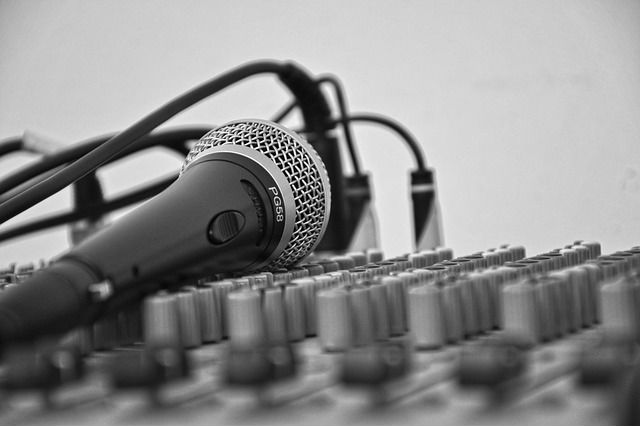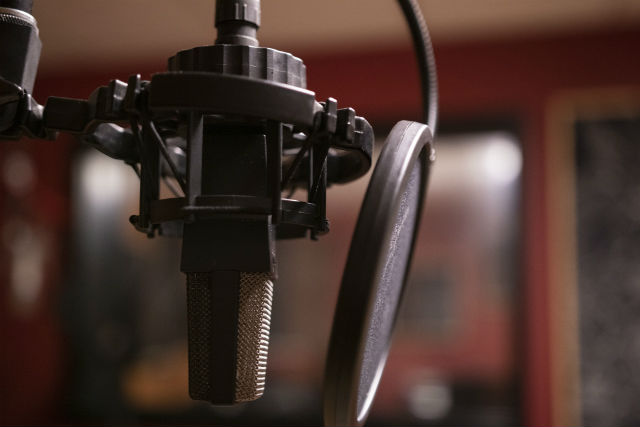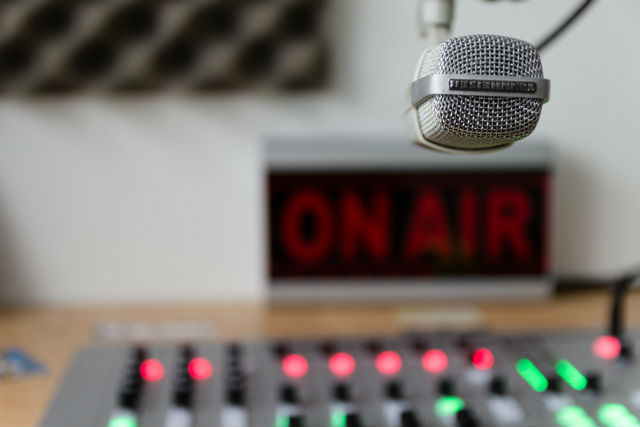Equipment for online radio station
Putting together an online radio studio is relatively simple and inexpensive. After you’ve signed up for Airtime Pro, or any other internet radio broadcasting software, have a look at our step-by-step guide to starting your own radio station. You are now ready to start acquiring the necessary equipment for online radio and make your dream of being an online DJ a reality.
Computer and microphone
The first two essential items (we’ll assume you already have an internet connection) to get your first station on air: a computer and a microphone. Any computer you already have should work just fine as long as it has USB ports and a headphone jack.
If you plan to keep it simple and just play music tracks, then you don’t even need a microphone. But if you want to live broadcast and do things like introduce songs and discuss news and current events, you’ll definitely need one. Most computers have internal microphones, but you’ll quickly discover that the sound output is less than desirable. If you don’t happen to have a mic lying around, you should invest in one right away. Any low-cost option such as a Blue Yeti USB microphone, will be a vast improvement on the sound quality of internal mics.
Headphones
You’ll also want a good set of headphones so you can hear yourself and your shows, and to help you monitor to assure transitions are seamless and audio levels are properly adjusted. Common earphones would do the trick, but much better is a product like Beyerdynamic’s DT 770 PRO headphones, which produce high and low frequencies and everything in-between with incredible precision.
As you begin to feel more confident about broadcasting and the future of your station (See: The 4 Steps to Successful Public Relations for Internet Radio), think about utilizing a dedicated space where equipment can be added easily. You may not have a spare room, but a sturdy table that can comfortably house an expanding setup for your home studio is a must and, of course, be sure to place it in an optimal spot with low noise levels and the least amount of disturbance.
Start your own internet radio station today, no credit card required!
7 day free trial Plans from $9.95/mo
Mixer
A mixing console is the next essential purchase on your road to becoming a real DJ. Also called a mixing desk or broadcasting desk, this device receives audio from a variety of sources, mixes them and outputs various channels in a consistent way that you control. For instance, if you have a computer, a turntable and/or CD player, mic and a phone hooked up to it, the desk will allow you to seamlessly switch from say a phone interview to a voice intro to a song. And it will consistently produce the audio to your specifications.

And more equipment for online radio…
One of the best broadcasting decks for beginners is the Behringer 802, not a big financial commitment at around €80. Behringer’s next step up is the Behringer DX2000USB, which offers more features and inputs, at around €200.00. Speaking of audio, once you’ve begun to use a mixing desk, you’ll probably soon recognize the need to upgrade your sound equipment. Consider adding a top-notch mic like the Electro Voice RE320, which is used at professional radio stations around the world. Connect it to a boom arm, which allows you to easily swivel the mic into various positions. It can be attached to the edge of the table, with a shock mount to hold the mic and provide maximum vibration reduction.

You should also use either a pop filter or microphone muffler to protect the mic and reduce the amount of sharp air hitting it. A muffler is a round piece of foam that fits over the mic, whereas the pop filter is more like a screen that is attached in front. A microphone processor device can also be added to clean up the signal and smooth out any remaining distortions.
And the last piece of the audio puzzle, foam soundproofing panels come in a variety of sizes and can be had cheaply. Placed strategically in your broadcast area, they are an excellent way to cancel out any remaining ambient and background sounds such as street noise.
Finally, if you’re finding that your new broadcasting habit is becoming more like a full-time occupation–don’t lose sight of the fact: this is one of the funnest jobs imaginable!–consider getting a dedicated computer to run your station. Mac or PC, it’s your choice, look for something with the most horsepower you can afford. Be sure to choose an SSD hard drive, which will never make annoying spinning noises, and avoid machines that suffer from excessive fan noise.
This video is made using InVideo.io
*Sourcefabric has not specifically tested the above-mentioned products. Nor are we a member of the Amazon affiliate program.


One Comment
Erick Freeman
am glad for the information would like start one by december. i will still need your help